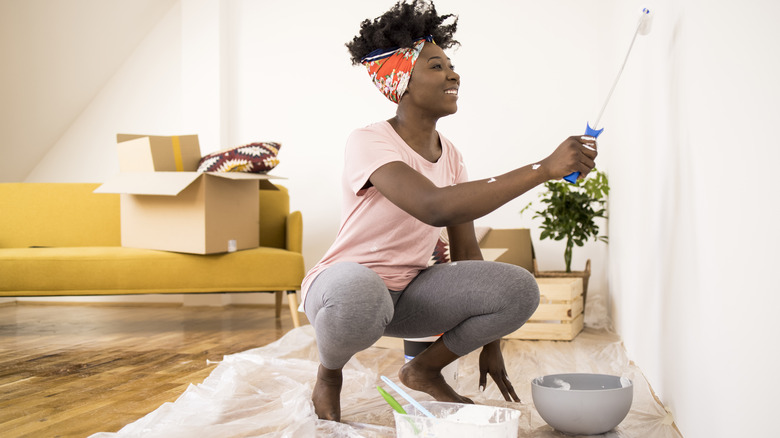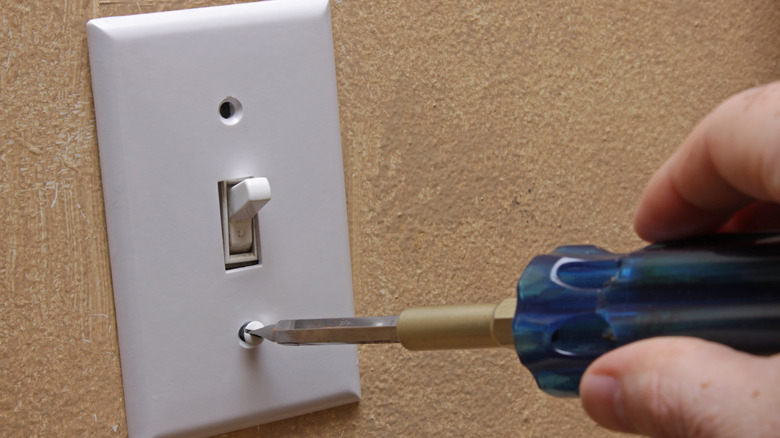Simple Hacks To Avoid Using Masking Tape While Painting
We may receive a commission on purchases made from links.
Whether you are painting your walls and doors or touching up some trim, a common step before starting a paint job is using painter's tape or masking tape to ensure clean lines. While taping a room before painting can help lead to a more professional-looking result, is it actually essential? Not necessarily, as it turns out. For those who dread the idea of this particular prep step, there are some simple tips you can employ in order to get those clean lines sans tape, including investing in a quality brush, using the cut-in method, utilizing drywall or putty knives, and removing any hardware that would otherwise have to be taped off.
While the overall prep before painting can prove tedious — removing furniture, fixing any holes or damage, cleaning the surface of where you'll be painting, and using a drop cloth on the floor and furniture — eliminating the need to tape may help the process feel less tiresome.
Choose a good brush and employ the cut-in method
If you want to avoid using masking tape while painting, you can employ the cut-in method. While this technique may take a bit of practice and patience, once you get the hang of it, taping will be a thing of the past. Start by painting along the line of where you'll be cutting in, about an inch or so away from the ceiling or trim. Then, without reloading the brush, go back again and this time, slide the brush right along the edge, making sure to press the angled part right up to the line. If you make a mistake, don't fret. For damage control, take a damp cloth and place it around a putty knife. Slide the knife along any slip ups. Be sure to fix any errors before the paint dries.
In order to make the most of the cut-in method, you may want to consider investing in a quality paint brush. A good paint brush will make your efforts look crisp, clean, professional, and lead to less streaking. There are countless brushes on the market, so it can feel a bit confusing figuring out which one is best. For cutting in, it's recommended that you use an angled brush with stiff bristles. Two great choices include the 2-inch Purdy Nylox Dale Angled Sash Paint Brush, available for around $13 on Amazon, and the 2-inch Wooster Shortcut Angle Sash Paintbrush, which costs just under $7 on Amazon.
Unscrew switchplates and use drywall or putty knives
A genius painting hack and a useful alternative to the cut-in method is using a drywall knife to help you create a straight line with no drips. While a putty knife is also a great option, the width of a drywall knife will help you cover more ground. You can get a drywall knife on Amazon for about $17. Place the edge of the knife where you would normally use tape, and go about painting. This will help you create a clean, precise line.
Whether or not you go with the cut-in method or the drywall knife, one of the simplest tips to employ if you aren't using masking tape before painting is unscrewing any light switch plates and outlet covers. Work smarter, not harder, and remove all of these as part of your prep in order to save yourself the hassle of painting around the fixtures. This will make the job easier and more efficient. Then, when the paint is dry, simply screw the plates back in.

